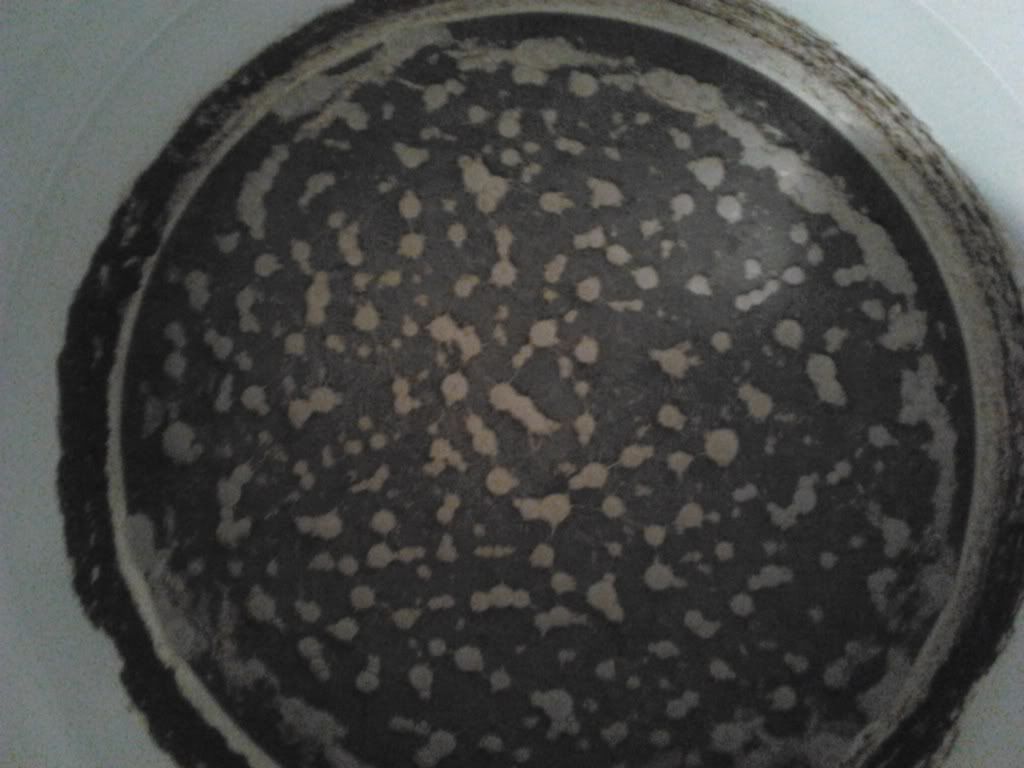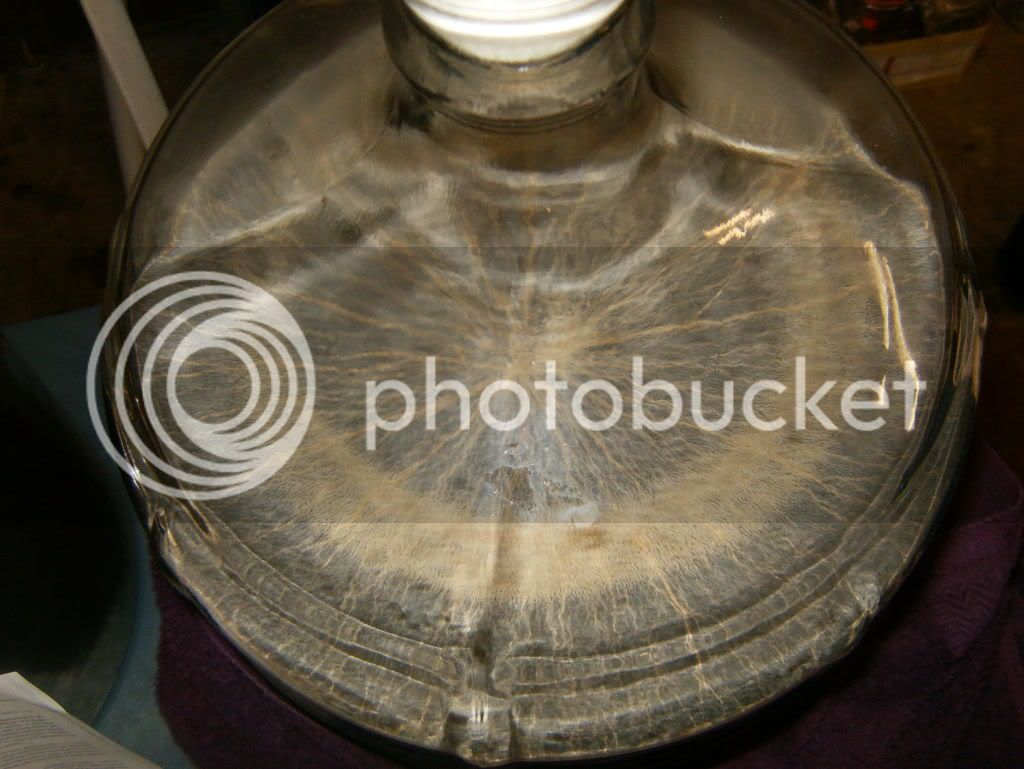commonsenseman
Well-Known Member
I posted this in the infection picture thread.
Now I'm wondering what I should do with it. I'm supposed to be adding 16oz of Bourbon & oak cubes to it in a couple weeks.
I'm thinking that I may continue as planned, but add a few campden tablets to try to stop the wild yeast. Then a week later, re-pitch & bottle. Any thoughts? Will that work, or am I just wasting my time? Should I just bottle it & drink it quickly?
Here's what my Bourbon Barrel Porter (from Northern Brewer) looked like coming out of primary:

Here's what it looks like right now after five days in secondary:

I'm ridiculously careful with sanitation too, so I dunno how this could've happened. I racked very carefully from under the first "thing", being careful not to transfer any of it.
Now I'm wondering what I should do with it. I'm supposed to be adding 16oz of Bourbon & oak cubes to it in a couple weeks.
I'm thinking that I may continue as planned, but add a few campden tablets to try to stop the wild yeast. Then a week later, re-pitch & bottle. Any thoughts? Will that work, or am I just wasting my time? Should I just bottle it & drink it quickly?


